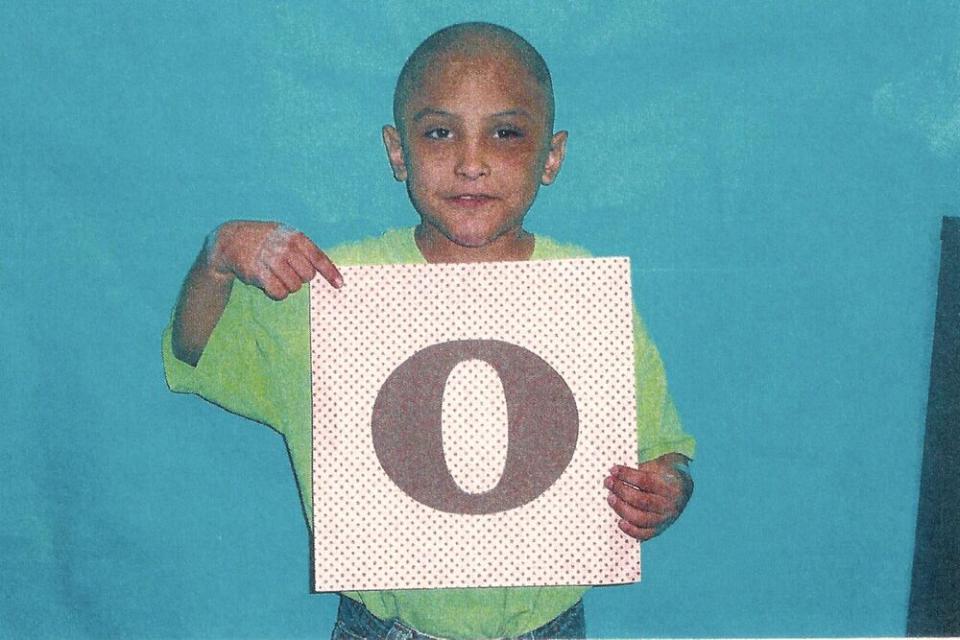The Trials of Gabriel Fernandez director explains why the documentary had to be a difficult watch
On the morning of May 22, 2013, 8-year-old Gabriel Fernandez was not on his way to school like other kids his age. Instead, he was being rushed to a local hospital in Palmdale, Calif., with obvious signs of trauma all over his battered, malnourished body.
Fernandez died two days later.
In Netflix’s The Trials of Gabriel Fernandez, award-winning documentarian Brian Knappenberger invites viewers into Judge George Lomeli’s courtroom where in 2018 Gabriel’s mother Pearl Fernandez and her boyfriend Isauro Aguirre were put on trial for his death.
“The documentary is a really difficult watch but it’s an important one,” Knappenberger tells EW. “We made the decision that Gabriel’s voice needed to be heard, and in order to tell that story we had to be as honest and as straightforward as we possibly could. I think that in the end, this is a story of a kind of redemption, or a questioning of how things can be better in this system and that has motivated us to tell the story.”
“There’s no question parts of it are very, very intense. But, I think by following the case, the trials, how it was resolved, will help people learn how we can make the system better — which is really the heart of the piece.”

Knappenberger began documenting Gabriel’s story during Pearl and Isauro’s trial in 2018. Witnesses, including social workers, emergency support workers, and family members described the extensive list of crimes committed against the young boy by people who were meant to protect him.
But in their care, Fernandez suffered from severe neglect, abuse, and was forced to eat cat litter. He’d been shot with a BB gun, had broken ribs, and would be kept in a locked cabinet in his mother’s room.
“Judge Lomeli let us into the courtroom and we listened to story after story about Gabriel,” he explains. “We were all a wreck in the beginning. We heard from first responders, who for many years took emergency calls of all types, testify that this was the powerful thing they’d ever seen or been a part of. Gabriel’s story meant so much to so many people.”
“This helped us learn early on that taking on this project was a huge responsibility and that we had to get it right,” Knappenberger continues. “What happened to Gabriel was the beginning of what was so infuriating, but then, the questions just got deeper and deeper as the trial went on. We needed to know, how so many people saw this child in that condition and didn’t stop it?”
As Knappenberger and his team went deeper into the case, they uncovered Gabriel was part of a perpetual circle of abuse. Although the director does not excuse Pearl for her crimes against her own son, he does dive into the abuse she also suffered.
“The answers aren’t as easy as you think they are in the beginning,” he says. “It’s easy to demonize both of them and they deserve it. There are plenty of people who have been abused that didn’t turn out this way. I think the more you learn about Pearl and Isauro, you’ll understand where they came from—particularly Pearl.
“She had early drug use, she was abused early on in her life, in multiple different ways. This can help expose that there’s a cycle here that’s happening. Maybe we just don’t know what’s going on with her? The conclusion that you come to about her just isn’t quite as clean as it was when you first started. I thought it was important in a six-hour documentary series to understand that complexity.”
He adds, “The word evil was thrown around the courtroom a lot, which surprised me a little bit. There’s no question that these acts were evil but there’s also a broken system that allows this to happen. Which is more evil? Which causes more pain? There’s no excuse for Pearl or Isauro and I want that to be clear. But they are humans who were a product of their own upbringing, and that’s a big part of the story, too.”
Pearl pleaded guilty to first-degree murder in 2018 with the special circumstance of intentional murder by torture and sentenced to life in prison without the possibility of parole. Isauro was convicted the same year of first-degree murder with the special circumstance of intentional murder by torture and sentenced to death.
Neither participated in the documentary though Knappenberger gave them a special phone number so they could reach him at any time throughout the process. They never called.
“The more we try to figure out what they were thinking, it gets more elusive somehow,” he says. “There really isn’t an answer. How does someone commit those crimes and horrible acts on someone like Gabriel? He was just a seven or 8-year-old boy. There are clues, but ultimately you can’t ever really get inside their heads.”
Related content:

